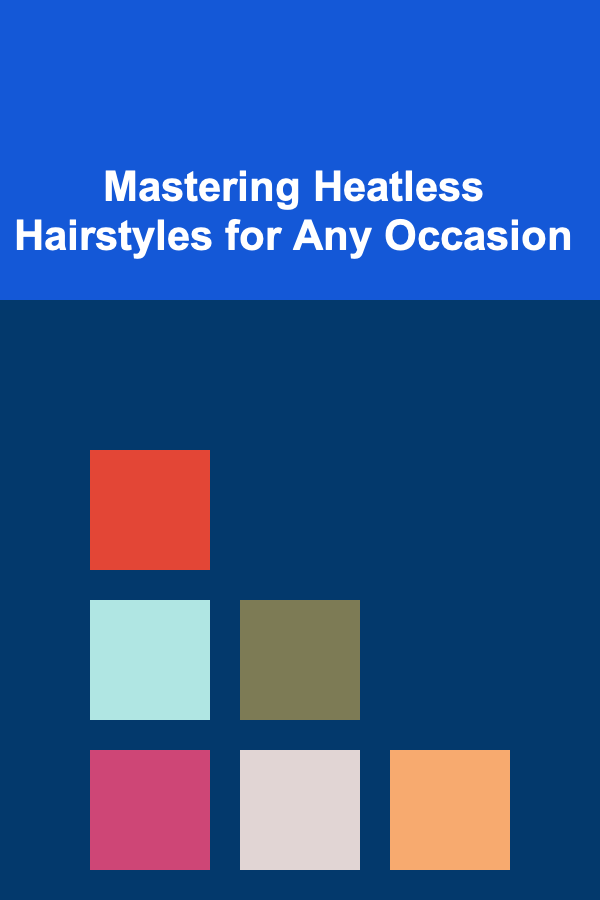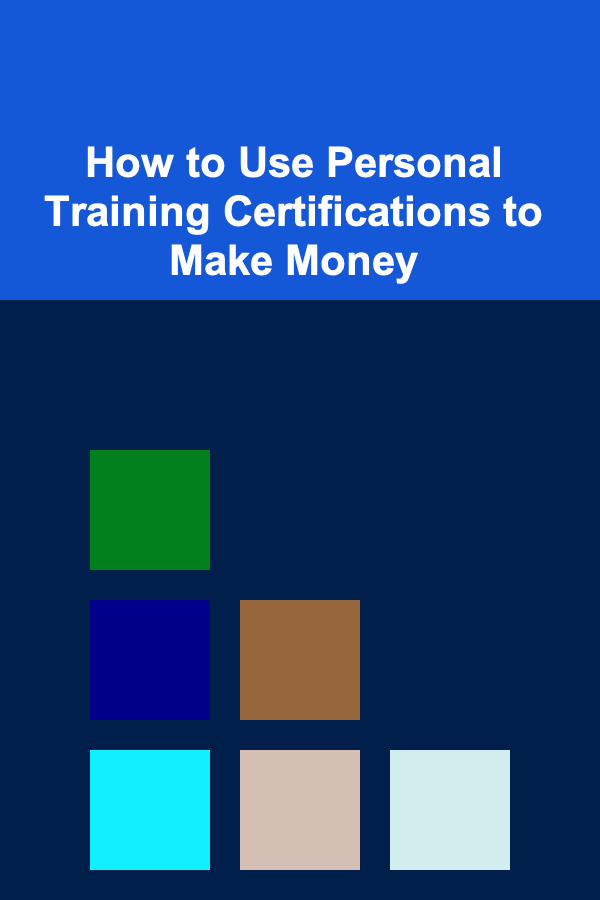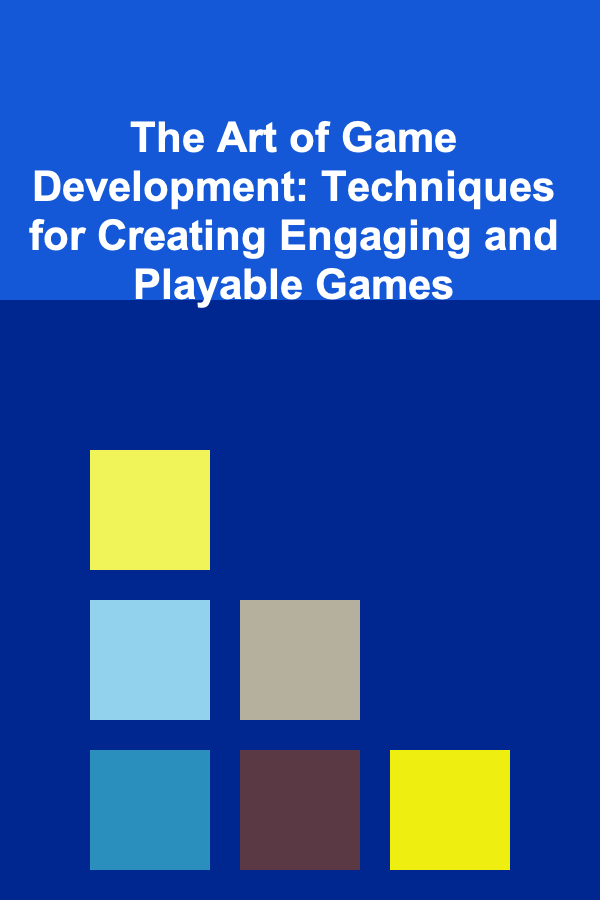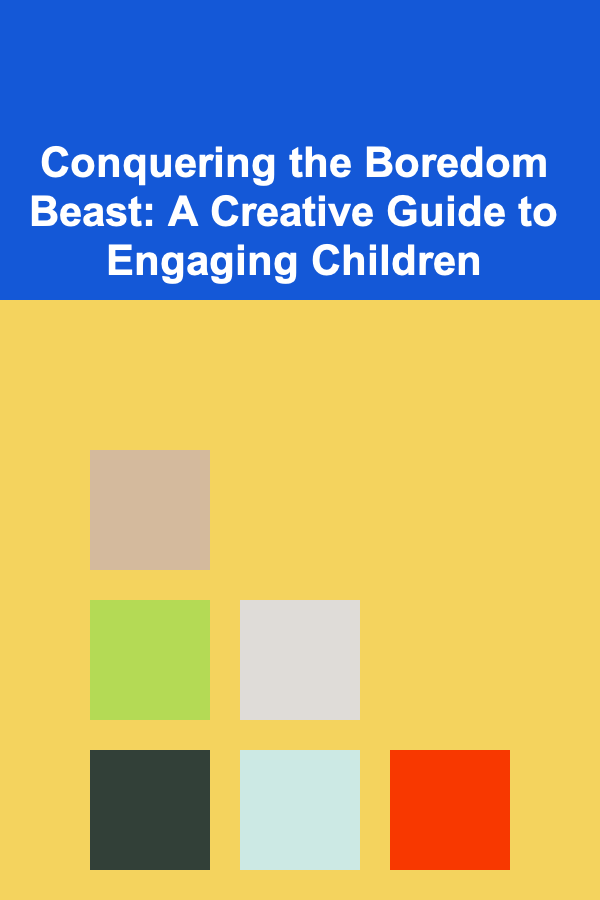
Mastering Heatless Hairstyles for Any Occasion
ebook include PDF & Audio bundle (Micro Guide)
$12.99$6.99
Limited Time Offer! Order within the next:

In a world obsessed with instant gratification, heat styling reigns supreme. Straighteners, curling irons, and blow dryers promise perfectly coiffed looks in minutes. However, this pursuit of quick beauty often comes at a cost: damaged, brittle, and lackluster hair. Thankfully, there's a healthier, more sustainable, and often equally stunning alternative: heatless hairstyles. Mastering these techniques not only protects your precious strands but also unlocks a world of versatility, allowing you to create elegant, casual, and everything in between, all without the damaging effects of heat.
This comprehensive guide delves into the art of heatless hairstyling, providing you with the knowledge and techniques to conquer any occasion, from a casual brunch to a formal gala. We'll explore the fundamental principles, essential tools, diverse techniques, and crucial aftercare practices that will empower you to achieve salon-worthy results without ever reaching for a hot tool.
Understanding the Foundation: Hair Types and Preparation
Before diving into specific hairstyles, it's crucial to understand your hair type. Different hair textures respond differently to heatless styling methods. Knowing your hair's porosity, density, and natural curl pattern will significantly impact the success of your heatless endeavors.
- Hair Porosity: This refers to your hair's ability to absorb moisture. Low porosity hair has tightly bound cuticles, making it difficult for moisture to penetrate. High porosity hair has raised cuticles, readily absorbing moisture but also losing it quickly. Medium porosity is the ideal balance. A simple test: drop a strand of your hair into a glass of water. If it floats for a while, it's likely low porosity. If it sinks quickly, it's high porosity.
- Hair Density: This refers to the number of strands on your head. High density hair is thick and full, while low density hair is thin and sparse. You can generally tell by looking at your ponytail. A thick ponytail indicates high density.
- Curl Pattern: Andre Walker's hair typing system categorizes hair into four main types: straight (Type 1), wavy (Type 2), curly (Type 3), and coily (Type 4). Each type has subcategories (a, b, and c) that further define the tightness of the curl or wave. Understanding your curl pattern is vital for choosing the right products and techniques.
Prepping Your Hair: The Key to Success
Proper preparation is arguably the most important step in achieving beautiful heatless hairstyles. This involves cleansing, conditioning, and sometimes applying styling products to create the optimal canvas.
- Cleansing: Choose a shampoo and conditioner suited to your hair type. If you have oily hair, opt for a clarifying shampoo. If your hair is dry, use a moisturizing shampoo and conditioner.
- Conditioning: Deep conditioning treatments are especially beneficial for heatless styles, as they add moisture and improve hair elasticity, making it more pliable and less prone to breakage. Consider a weekly deep conditioning mask.
- Product Application: Depending on the desired style, you may need to apply leave-in conditioner, mousse, gel, or styling cream. These products help define curls, add volume, or provide hold. Experiment to find what works best for your hair.
- Drying: The level of dampness is crucial. For many styles, hair should be damp, not soaking wet. Air drying or using a microfiber towel to remove excess moisture is ideal. Avoid rubbing vigorously, as this can cause frizz.
Pro Tip: For stubborn or resistant hair, consider using a hair steamer to help open the hair cuticle and allow moisture to penetrate more effectively. This can significantly improve the definition and longevity of your heatless style.
Essential Tools for Heatless Styling
While heatless styling eliminates the need for hot tools, having the right accessories is essential for achieving polished and professional-looking results.
- Satin or Silk Scarves/Bonnet: These are crucial for protecting your hair while you sleep. Satin or silk reduces friction, preventing frizz, breakage, and moisture loss.
- Satin or Silk Pillowcase: Similar to scarves and bonnets, satin pillowcases minimize friction and promote healthy hair.
- Flexi-Rods or Curlformers: These are flexible, foam or plastic rods that can be used to create curls and waves of various sizes.
- Foam Rollers: A classic choice for creating bouncy curls.
- Headbands: Versatile for creating updos, braids, and other stylish looks.
- Hair Ties: Choose soft, seamless hair ties that won't cause breakage. Avoid elastics with metal pieces.
- Clips: Duckbill clips, bobby pins, and claw clips are essential for sectioning hair and securing styles.
- Wide-Tooth Comb: Use a wide-tooth comb to detangle your hair gently, especially when it's wet or damp.
- Spray Bottle: Fill a spray bottle with water or a leave-in conditioner mix to dampen hair as needed.
- Microfiber Towel: Reduces frizz and dries hair faster than a regular towel.
Example: Imagine you're aiming for voluminous waves. You'll likely need a microfiber towel to dry your hair to the appropriate dampness, mousse for definition, flexi-rods to create the waves, and a satin scarf to protect your hair overnight.
Techniques Unveiled: Mastering Heatless Hairstyles
Now, let's explore a variety of heatless hairstyling techniques that cater to different hair types and occasions.
1. Braiding Techniques: From Simple to Intricate
Braids are a versatile and classic way to achieve heatless waves and curls. The tighter the braid, the tighter the wave or curl. The dampness of the hair also impacts the final result. Braiding can be used on any hair type, although the results will vary.
- Basic Three-Strand Braid: A simple braid that creates loose, natural-looking waves. Braid your damp hair before bed and unravel in the morning for effortless waves.
- French Braid/Dutch Braid: These braids create a more structured wave pattern. Experiment with different braiding patterns (e.g., braiding around the head for a halo braid effect) to achieve unique results.
- Fishtail Braid: This braid creates a beautiful, textured wave. It's slightly more complex than a three-strand braid but well worth the effort.
- Pigtail Braids: Braiding your hair into two pigtails will result in more defined, even waves compared to a single braid.
- Micro Braids (Braid Outs): For tighter, more defined curls, try micro braiding your hair. This technique is particularly effective for textured hair.
Tips for Braiding:
- Ensure your hair is evenly damp before braiding.
- Use a small amount of mousse or styling cream to help define the waves.
- Secure the ends of the braids with soft hair ties.
- For looser waves, braid larger sections of hair. For tighter waves, braid smaller sections.
2. Twisting Techniques: A Textured Alternative to Braids
Twisting is another excellent heatless styling method that creates beautiful, textured waves and curls. It's particularly popular for textured hair types.
- Two-Strand Twists: Divide a section of damp hair into two strands and twist them around each other. Secure the end with a hair tie.
- Flat Twists: Similar to cornrows, flat twists are created by twisting sections of hair close to the scalp.
- Twist Outs: After twisting your hair, allow it to dry completely (air dry or use a hooded dryer on a low setting). Then, carefully unravel the twists for defined, voluminous curls.
Tips for Twisting:
- Use a moisturizing leave-in conditioner before twisting.
- Apply a styling cream or gel for added definition and hold.
- Ensure your hair is completely dry before unraveling the twists.
- Use your fingers to separate the curls for a more natural look.
3. Bun Techniques: Effortless Waves and Body
Buns aren't just for keeping your hair out of your face; they're also a fantastic way to create heatless waves and add body to your hair.
- Sock Bun Curls: This popular technique involves rolling sections of damp hair around a sock or foam donut and securing it into a bun. Sleep with the bun overnight and unravel in the morning for bouncy curls.
- Space Buns: Dividing your hair into two buns on top of your head creates a fun and playful wavy texture.
- Top Knot: A simple top knot can add volume and bend to the roots of your hair.
- The Medusa Clip Method: Flip your head over and clip small sections of hair toward the top of your head. The next morning, you'll have incredible volume.
Tips for Bun Styling:
- Ensure your hair is damp but not soaking wet.
- Use a styling mousse or cream to help define the waves.
- Secure the bun tightly to ensure the curls hold their shape.
- Experiment with different bun placements to achieve varying wave patterns.
4. Pin Curls: Classic Definition and Control
Pin curls are a classic heatless styling technique that allows for precise curl placement and definition. They are particularly effective for creating vintage-inspired hairstyles.
- Basic Pin Curl: Take a small section of damp hair, wrap it around your finger to form a loop, and secure it to your scalp with a bobby pin.
- Barrel Curls: Similar to pin curls, but the hair is wrapped around a barrel-shaped object (e.g., a chopstick or a flexi-rod) for larger, looser curls.
Tips for Pin Curling:
- Use a strong-hold styling gel or mousse.
- Pin curls can be arranged in various patterns to create different curl directions.
- Allow your hair to dry completely before removing the pins.
- Gently brush out the curls for a softer, more polished look.
5. Headband Curls: Simple and Effective Waves
This technique uses a headband to create beautiful, romantic waves. It's relatively simple and requires minimal effort.
- The Headband Wrap: Place a headband around your head, wrapping sections of damp hair around the headband until all of your hair is secured. Leave it overnight and unravel in the morning for effortless waves.
Tips for Headband Curls:
- Use a comfortable, stretchy headband.
- Wrap your hair tightly around the headband for more defined waves.
- Experiment with different headband placements for varying wave patterns.
6. Flexi-Rod or Curlformer Curls: Versatile Curl Creation
Flexi-rods and Curlformers are excellent tools for creating a variety of curl sizes and shapes without heat. They are particularly effective for achieving defined and long-lasting curls.
- Flexi-Rod Curls: Wrap sections of damp hair around flexi-rods and secure them by bending the ends.
- Curlformer Curls: Use a hook to pull sections of damp hair through Curlformers.
Tips for Flexi-Rod and Curlformer Curls:
- Choose the appropriate size of flexi-rod or Curlformer based on your desired curl size.
- Ensure your hair is evenly damp before wrapping it around the rods or Curlformers.
- Allow your hair to dry completely before removing the rods or Curlformers.
- Gently separate the curls for a more natural look.
7. The Plopping Method: Enhancing Natural Curls
Plopping is a technique that helps enhance natural curl patterns by encouraging the hair to dry in its natural curl formation. It's particularly effective for curly and coily hair types.
- The Plopping Technique: Apply your usual styling products to wet hair. Flip your head over and place a microfiber towel or t-shirt on a flat surface. Lower your hair onto the towel, gathering it in a pile. Wrap the towel around your head and secure it. Leave it for 20-30 minutes, or even overnight.
Tips for Plopping:
- Use a microfiber towel or a smooth cotton t-shirt to minimize frizz.
- Experiment with different lengths of time to find what works best for your hair.
- Consider using a diffuser on a low setting to speed up the drying process.
Occasion-Based Styling: From Casual to Formal
Now that you're familiar with various heatless styling techniques, let's explore how to adapt them for different occasions.
1. Casual Everyday Styles
For everyday looks, prioritize comfort, simplicity, and ease of maintenance. Loose waves, textured braids, and effortless buns are excellent choices.
- Effortless Beach Waves: Achieve this look by braiding your damp hair loosely before bed or using the headband method.
- Textured Braid: A simple three-strand braid or a fishtail braid can add a touch of style to your everyday look.
- Messy Bun: A quick and easy way to keep your hair out of your face while still looking chic.
- Half-Up Half-Down Style: Combine braided sections with loose waves for a relaxed and stylish look.
2. Work-Appropriate Styles
For the workplace, opt for polished and professional styles that are both stylish and practical.
- Sleek Low Bun: A classic and elegant choice that is perfect for any professional setting.
- French Twist: A sophisticated updo that is both timeless and chic.
- Braided Crown: A stylish and elegant updo that is perfect for adding a touch of personality to your work attire.
- Low Ponytail with Waves: A simple yet elegant style that combines polished waves with a classic ponytail.
3. Date Night Styles
For date night, aim for romantic and alluring styles that enhance your natural beauty.
- Romantic Waves: Achieve this look by using flexi-rods or Curlformers to create soft, bouncy curls.
- Side-Swept Curls: A glamorous and elegant style that is perfect for a special occasion.
- Braided Updo: Combine braids with an updo for a romantic and intricate style.
- Half-Up Braided Hairstyle: A combination of braids and flowing hair creates a beautiful and romantic style.
4. Formal Occasion Styles (Weddings, Galas)
For formal events, prioritize sophisticated and elegant styles that make a statement.
- Elegant Updo: Combine pin curls, braids, and twists to create a stunning and intricate updo.
- Hollywood Waves: Achieve this classic look by using pin curls or flexi-rods to create defined and glamorous waves.
- Braided Chignon: A sophisticated and elegant updo that combines braids with a classic chignon.
- Intricate Braids with Embellishments: Accessorize your braids with jeweled clips or headbands for a truly glamorous look.
Aftercare and Maintenance: Preserving Your Heatless Style
Maintaining your heatless style is just as important as creating it. Proper aftercare will ensure your style lasts longer and your hair remains healthy and hydrated.
- Protecting Your Hair While You Sleep: Always sleep with a satin or silk scarf or bonnet to minimize friction and prevent frizz.
- Refreshing Your Style: Use a spray bottle filled with water or a leave-in conditioner mix to refresh your style throughout the day. Gently scrunch your hair to reactivate the curls or waves.
- Avoiding Frizz: Minimize touching your hair throughout the day, as this can cause frizz. Use a satin scarf to protect your hair from the wind.
- Moisturizing Regularly: Keep your hair hydrated by using a leave-in conditioner or hair oil regularly.
- Scalp Care: A healthy scalp is essential for healthy hair growth. Massage your scalp regularly to stimulate blood circulation and remove buildup.
- Avoiding Over-Washing: Over-washing can strip your hair of its natural oils, leading to dryness and frizz. Try to wash your hair only when necessary.
- Deep Conditioning Regularly: Deep conditioning treatments provide your hair with essential moisture and nutrients. Aim for a weekly deep conditioning session.
- Gentle Detangling: Use a wide-tooth comb to detangle your hair gently, especially when it's wet or damp. Start from the ends and work your way up to the roots.
Troubleshooting Common Heatless Styling Challenges
Even with the best techniques and products, you may encounter some challenges along the way. Here are some solutions to common problems:
- Frizz: Frizz is a common issue with heatless styling. Combat frizz by using moisturizing products, avoiding friction, and protecting your hair while you sleep.
- Lack of Hold: If your style isn't holding its shape, try using a stronger-hold styling product or tightening your braids, twists, or buns.
- Uneven Curls/Waves: Ensure your hair is evenly damp before styling and that you're using consistent techniques throughout.
- Drying Time: Heatless styles can take a long time to dry. Consider using a hooded dryer on a low setting or plopping your hair to speed up the process.
- Product Buildup: Overuse of styling products can lead to buildup. Use a clarifying shampoo regularly to remove buildup and keep your hair clean.
- Difficulty Achieving Definition: If your hair struggles to hold a curl or wave, try using a more defining styling product, such as a gel or mousse, and ensure your hair is adequately moisturized.
Conclusion: Embrace the Beauty of Heatless Styling
Mastering heatless hairstyles is an investment in the long-term health and beauty of your hair. By understanding your hair type, utilizing the right tools, and practicing various techniques, you can achieve stunning, salon-worthy results without the damaging effects of heat. From casual everyday styles to elegant formal looks, the possibilities are endless. Embrace the versatility and benefits of heatless styling and unlock a world of beautiful and healthy hair.
Experiment with different techniques, products, and accessories to find what works best for your hair. Don't be afraid to get creative and personalize your styles. With patience and practice, you'll become a heatless hairstyling pro in no time!

Best Organization Tools for Managing Finances
Read More
How to Create a Budget for Home Repairs and Maintenance
Read More
How to Create a Checklist for Decluttering Your Entryway: An Actionable Guide
Read More
How to Use Personal Training Certifications to Make Money
Read More
The Art of Game Development: Techniques for Creating Engaging and Playable Games
Read More
Conquering the Boredom Beast: A Creative Guide to Engaging Children
Read MoreOther Products

Best Organization Tools for Managing Finances
Read More
How to Create a Budget for Home Repairs and Maintenance
Read More
How to Create a Checklist for Decluttering Your Entryway: An Actionable Guide
Read More
How to Use Personal Training Certifications to Make Money
Read More
The Art of Game Development: Techniques for Creating Engaging and Playable Games
Read More